Constantine II of Greece
Constantine II (Greek: Κωνσταντίνος Βʹ, Konstantínos II, pronounced [ˌkonstanˈdinos]; born 2 June 1940) reigned as the King of Greece from 1964 until the abolition of the monarchy in 1973.
| Constantine II | |
|---|---|
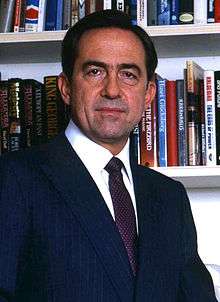 Constantine II in 1987 | |
| King of the Hellenes | |
| Reign | 6 March 1964 – 1 June 1973 |
| Predecessor | Paul |
| Successor | Monarchy abolished |
| Prime Ministers | |
| Born | 2 June 1940 Psychiko, Athens, Kingdom of Greece |
| Spouse | Anne-Marie of Denmark ( m. 1964) |
| Issue |
|
| House | Glücksburg |
| Father | Paul of Greece |
| Mother | Frederica of Hanover |
| Religion | Greek Orthodox |
He acceded as king following the death of his father King Paul in March 1964. Later that year he married Princess Anne-Marie of Denmark with whom he eventually had five children. Although the accession of the young monarch was initially regarded auspiciously, his reign soon became controversial: Constantine's involvement in the Apostasia of July 1965 created unrest among sections of the population and aggravated the ongoing political instability that culminated in the Colonels' Coup of 21 April 1967.
The coup was successful, leaving Constantine, as the head of state, little room to manoeuvre since he had no loyal military forces on which to rely. As a result, he reluctantly agreed to inaugurate the Greek military junta of 1967–1974 on the condition that it be made up largely of civilian ministers. On 13 December 1967, Constantine was forced to flee the country, following an unsuccessful countercoup against the junta. He remained (formally) the head of state in exile until the junta abolished the monarchy on 1 June 1973. The 1973 Greek republic referendum on 29 July, ratified the abolition. There were questions concerning the validity of this referendum and whether people were pressured to vote for a republic. Therefore a fresh referendum was held after the restoration of democracy in 1974. This second referendum was held after the fall of the junta as the 1974 Greek republic referendum on 8 December 1974 and confirmed the abolition of the monarchy and the establishment of the Third Hellenic Republic. Constantine, who was not allowed to return to Greece to campaign,[1] accepted the results of the plebiscite.[2]
Constantine is also a former competitive sailor and Olympian, winning a gold medal in the 1960 Rome Olympics in the Dragon class, and later serving on the International Olympic Committee.
Early life
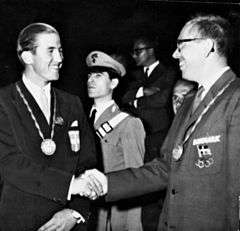 Constantine (left) at the 1960 Olympics | |||||||||||
| Personal information | |||||||||||
|---|---|---|---|---|---|---|---|---|---|---|---|
| Height | 189 cm (6 ft 2 in) | ||||||||||
| Weight | 80 kg (176 lb) | ||||||||||
Medal record
| |||||||||||
Constantine was born at the Psychiko Palace in Psychiko, a suburb of Athens. He was the nephew of King George II, and also the second child and only son of the king's brother and heir presumptive, Crown Prince Paul. His mother was Princess Frederica of Hanover.[3] Constantine's older sister, Queen Sofía of Spain, is the wife of the retired King Juan Carlos I of Spain, while his younger sister, Princess Irene, has never been married.
Constantine was just one year old when Fascist Italy and Nazi Germany invaded Greece, and he spent the next four years in exile in Egypt and Cape Town, South Africa, (where his sister Irene was born) with his family. He returned to Greece with his family in 1946. King George died in 1947, and Constantine's father became the new king, making Constantine the crown prince. He was educated at a preparatory school and later a boarding school (Victoria College of Alexandria, Egypt, where his classmates included King Hussein of Jordan and actor Omar Sharif).[3] A fellow student recalled him as "a good chap, a young man with all the right instincts. He was at his best on the playing fields."[3]
Constantine served in all three branches of the Hellenic Armed Forces, attending the requisite military academies. He also attended the NATO Air Force Special Weapons School in Germany, as well as the University of Athens, where he took courses in the school of law.[3] He is an honorable member of the International Soling Association and honorable President of the International Dragon Association.
Constantine was an able sportsman. In 1960, aged 20, he won an Olympic gold medal in sailing (dragon class), which was the first Greek gold medal in sailing since the Stockholm 1912 Summer Olympics.[4] He was also a strong swimmer and had a black belt in karate, with interests in squash, track events and riding.[3] In 1963 Constantine became a member of the International Olympic Committee (IOC). He resigned in 1974 because he was no longer a Greek resident, and was made an Honorary IOC Member.[5]
Reign
In March 1964, King Paul died of cancer, and the 23-year-old Constantine succeeded him as king. Prior to this, Constantine had already been appointed as regent for his ailing father.[6]
King Paul's long-time prime minister Konstantinos Karamanlis regarded him partly responsible for his fall from leadership in 1963.
However, due to his youth, he was also perceived as a promise of change. The accession of Constantine coincided with the recent election of Centrist George Papandreou as prime minister in February 1964, which ended 11 years of right-wing rule by the National Radical Union (ERE).
Greece was still feeling the effects of the Civil War of 1944–49 between communists and monarchists, and society was strongly polarised between the royalist/conservative right and the liberal/socialist left. It was hoped that the new young king and the new prime minister would be able to overcome past dissensions.
Initially, relations between the king and Papandreou seemed good, but by 1965, they had deteriorated. The conservative establishment feared the rising influence of Papandreou's left-leaning son Andreas, and the outbreak of the purported ASPIDA scandal seemed to confirm their suspicions.
The name of Andreas Papandreou was implicated in the case, and when the defence minister, Petros Garoufalias tried to form a committee of inquiry into the alleged scandal, the prime minister forced his resignation. Immediately, George Papandreou assigned the defence portfolio to himself; this caused alarm in the palace and the conservative security circles, which interpreted this move as an attempt by Papandreou to control the army. Constantine refused to accept the self-appointment, and a new political issue resulted.
Constantine proposed the appointment of any other person of the prime minister's choosing as defence minister because, as the king argued, there was a conflict of interest: the prime minister's son was allegedly involved in the scandal.
Papandreou rejected the king's proposition, although he had initially shown some willingness to accept it, and submitted his own resignation, stating that it was well within his constitutional powers as the elected prime minister commanding a Parliamentary majority to appoint his ministers at his pleasure, and it was beyond the constitutional powers of the king to refuse him this right.
A short time after his resignation, Constantine appointed a new government led by Georgios Athanasiadis-Novas, who failed to ensure the Parliament's confidence. This appointment, which became known as the "Royal Coup" (Το Βασιλικό Πραξικόπημα), evoked much criticism as being unconstitutional.
According to the critics, the appointment of this and successive governments consisting of aisle-crossers instead of the proclamation of new elections, caused a constitutional crisis and political instability that lasted for more than two years and led to the Greek military junta of 1967-1974.
After his failure, Novas was succeeded by Ilias Tsirimokos, who also failed to form a stable government and was dismissed. Constantine next appointed some of Papandreou's dissidents, known as the July Apostates and led by Stefanos Stefanopoulos, to form a government of "king's men", which lasted until December 1966, amidst mounting strikes and protests, supported by the right-wing ERE.
When Stefanopoulos resigned in frustration, Constantine appointed a caretaker government under Ioannis Paraskevopoulos, which called elections for May 1967. This government did not even last until the scheduled elections. It was replaced on 3 April 1967 by another caretaker government under the leader of the ERE, Panagiotis Kanellopoulos.
.jpg)
Greek dictatorship 1967–1974
Elections were scheduled for 28 May 1967, with expectations of a wide Centrist victory. According to United States diplomat John Day, the Americans worried that, due to the old age of George Papandreou, Andreas Papandreou would have a very powerful role in the next government.
According to the United States diplomats Robert Keely and John Owens, who were attached to the United States embassy in Greece at the time, Constantine asked United States Ambassador Phillips Talbot what the attitude of the United States government would be to an extra-parliamentary solution to this problem. The embassy responded negatively in principle, adding that "US reaction to such a move cannot be determined in advance but would depend on circumstances at time". To this day, Constantine denies all this. According to then-Ambassador from the United States Phillips Talbot, after this communication, Constantine met with the generals of the army, who promised the king that they would not take any action before the coming elections. However, they were nervous by the proclamations of Andreas Papandreou and reserved to themselves the right to reconsider possible courses of action according to the results of the election.[7]
A traditionalist, right-wing nationalist group of middle-ranking army officers led by Colonel George Papadopoulos took action first and staged a coup d'état on 21 April. The coup leaders met Constantine at his residence in Tatoi, which was surrounded by tanks to prevent resistance. Constantine later recounted that the officers of the tank platoons believed they were carrying out the coup under his orders.[7] The king argued with the colonels and initially dismissed them. Later in the day, he went to the Ministry of National Defence, where all coup leaders were gathered, and had a discussion with Kanellopoulos and with leading generals. He agreed to concede to the military demands and swear the new regime in only when the junta agreed to include a number of civilian politicians, with a royalist nominee, Konstantinos Kollias, as prime minister. Panayotis Kanellopoulos, the last legitimate prime minister of Greece prior to the coup, acting as witness for the prosecution, at the junta trials in 1975 during metapolitefsi, testified how he was arrested by machine-gun toting soldiers and transported to the palace to meet King Constantine. He added that during the meeting he urged the king to use his status as commander-in-chief of the Greek military to order loyal officers to crush the coup. Constantine apparently refused to do so because he feared bloodshed.[8]
From the outset, the relationship between Constantine and the regime of the colonels was an uneasy one.[9] Constantine organised a counter-coup, though no help or involvement of the United States was forthcoming. The king finally decided to launch his counter-coup on 13 December 1967. Since Athens was effectively in the hands of the junta militarily, Constantine decided to fly to the small northern city of Kavala, east of Thessaloniki. There he hoped to be among troops loyal only to him. The vague plan he and his advisors had conceived was to form a unit that would advance to Thessaloniki (Greece's second biggest city and unofficial capital of northern Greece) and take it. Constantine planned to install an alternative administration there. International recognition, which he believed to be forthcoming, as well as internal pressure from the fact that Greece would have been split into two governments would, the king hoped, force the junta to resign, leaving the field clear for him to return triumphant to Athens.
In the early morning hours of 13 December, the king boarded the royal plane together with Queen Anne-Marie of Greece, their two young children, Princess Alexia and Prince Pavlos, his mother, Queen Frederica, and his sister, Princess Irene. Constantine also took with him Premier Kollias. At first things seemed to be going according to plan. Constantine was well received in Kavala which, militarily, was under the command of a general loyal to him. The air force and navy, both strongly royalist and not involved in the 1967 coup, immediately declared for him and mobilised. Another of Constantine's generals effectively cut all communication between Athens and the north. However, the king's plans were overly bureaucratic, naïvely supposing that orders from a commanding general would automatically be followed. Further, the king was obsessive about avoiding "bloodshed" even where the junta would be the attacker.
Under these circumstances, rather than managing to put together a force and advancing on Thessaloniki, middle-ranking pro-junta officers neutralised and arrested his royalist generals and took command of their units, which subsequently put together a force advancing on Kavala to arrest the king. Realising that the countercoup had failed, Constantine fled Greece on board the royal plane, taking his family and hapless premier with him. They landed in Rome early in the morning of 14 December, where they remained in exile all through the rest of military rule (although he continued as king until 1 June 1973). He was never to return to Greece as a reigning king.
Constantine stated, "I am sure I shall go back the way my ancestors did."[9] The world had changed significantly though since the monarchy had made its last comeback. Constantine continued to watch events from abroad. He said to the Toronto Star:
I consider myself King of the Hellenes and sole expression of legality in my country until the Greek people freely decide otherwise. I fully expected that the (military) regime would depose me eventually. They are frightened of the Crown because it is a unifying force among the people.[3]
With Constantine abroad, Colonel George Papadopoulos illegally appointed himself prime-minister and General George Zoitakis as regent.
Over the next year the junta sent intermediaries to the king to negotiate the terms on which he might return to Greece. But Constantine insisted on the full restoration of democracy under the existing constitution as a precondition, and George Papadopoulos would not agree to this. Instead the regime illegally promulgated a new constitution in November 1968, which retained the monarchy, but stripped it of its powers, and provided for a permanent regency until the king chose to accept the new order. This standoff continued until 1972, when George Papadopoulos illegally dismissed George Zoitakis and appointed himself regent.
In June 1973, George Papadopoulos condemned Constantine as "a collaborator with foreign forces and with murderers" and accused him of "pursuing ambitions to become a political leader".[3] In May, officers of the largely royalist navy staged an abortive coup, although Constantine himself was not involved. George Papadopoulos retaliated by declaring Greece a republic (1 June), a decision which was confirmed by a plebiscite on 29 July. The vote was widely acknowledged to be rigged. Constantine refused to accept the outcome. George Papadopoulos then declared himself president, but in November there was a coup within the regime and he was replaced by General Phaidon Ghizikis, who was a front for the new military strongman, Dimitrios Ioannides.
Restoration of democracy and the referendum
In July 1974, the events in Cyprus led to the downfall of the military regime, and Karamanlis returned from exile to become prime minister. The 1973 republican constitution was regarded as illegitimate, and the new administration issued a constitutional decree restoring the 1952 constitution. Constantine confidently awaited an invitation to return.[3] On 24 July he declared his "deep satisfaction with the initiative of the armed forces in overthrowing the dictatorial regime" and welcomed the advent of Karamanlis as prime minister.
The former king visited both Buckingham Palace and 10 Downing Street and openly declared his hope to be shortly returning to Greece. However, the 1952 constitution was not restored with the overthrow of the illegal junta. Following Karamanlis' resounding victory in the November 1974 parliamentary elections (his New Democracy party won 54.4% of the vote), he called a referendum (held on 8 December 1974) on whether Greece would restore the monarchy or remain a republic.
Although he had been the leader of the traditionally monarchist right, Karamanlis made no attempt to restore the democratic constitution of 1952. Instead he called on the Greek people to vote "according to their conscience". The former king was not allowed by the government to return to Greece to campaign on behalf of the benefits to Greece of the constitutional monarchy. He was only allowed to broadcast to the Greek people from London on television. Analysts claim this was a deliberate act by the government to undermine any chance to restore the monarchy.[10]
The left voted overwhelmingly for the republic because the former king was perceived by them as having engaged in political interference far beyond the scope of the monarchical prerogative. They also objected to the perceived influence exercised by members of the royal family who had no constitutional role in the political life of the country; the former king's mother, Queen Frederica, being a case in point.
The republic received overwhelming support by the centrist voters who condemned Constantine for, among other things, swearing in the junta in 1967. They also blamed his reluctance to sever all ties with the junta once in exile, and the dismissal of the legitimately elected George Papandreou administration (Apostasia of 1965), the event which some believed led to the coup.
Constantine, speaking from London, freely admitted his past mistakes. He claimed to have sound democratic intentions in the future and promised that his mother would stay away from the country.[3] Local monarchists campaigned on his behalf. The vote to restore the monarchy was only about 31%, having most of his support from the Peloponnese region, with almost 69% of the electorate voting against the restoration of the monarchy and for the establishment of a republic.[3] The result was met with celebrations in the streets of Athens and other major cities.
In exile
Constantine remained in exile for almost forty years after the vote in favour of the republic.[3][11] He was strongly discouraged from returning to Greece, and he did not return until February 1981, when the government only allowed him to return for a few hours, to attend the funeral of his mother, Queen Frederica, in the family cemetery of the former Royal Palace at Tatoi.
There were also legal disputes with the Greek state. In 1992 he concluded an agreement with the conservative government of Prime Minister Constantine Mitsotakis, ceding most of his land in Greece to a non-profit foundation in exchange for the former palace of Tatoi, near Athens, and the right to export a number of movables from Greece. The latter reportedly included privately owned art treasures from the royal palaces. As such, no formal account of what was removed was ever given or needed to be given. In 1993, Constantine visited Greece, but faced with government insecurity, he was asked to leave. In 1994, the second government of Andreas Papandreou passed new legislation reversing the 1992 agreement and stripping Constantine of his property in Greece and his Greek citizenship.
Constantine sued Greece at the European Court of Human Rights for €500 million in compensation for the seized property. He won a much smaller amount, receiving a monetary compensation of €12 million for the lost property, with a far smaller sum awarded to his unmarried younger sister, Princess Irene, and his aunt Princess Katherine.[12] The Greek government chose to pay out of the "extraordinary natural disasters" fund, but was not obliged by the court's decision to return any lands (the Court of Human Rights awards only monetary compensation).
Constantine, in turn, announced the creation of the Anna Maria Foundation, to allocate the funds in question back to the Greek people for use in "extraordinary natural disasters" and charitable causes. The court decision also ruled that Constantine's human rights were not violated by the Greek state's decision not to grant him Greek citizenship and passport unless he adopts a surname.
Later life
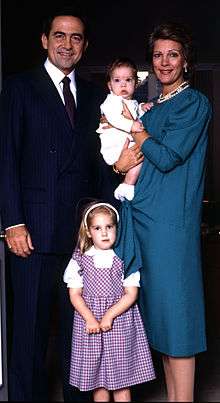
Following the abolition of the monarchy, Constantine has repeatedly stated that he recognizes the Republic, the laws and the constitution of Greece. He told Time, "If the Greek people decide that they want a republic, they are entitled to have that and should be left in peace to enjoy it."[13]
Constantine and Anne-Marie for many years lived in Hampstead Garden Suburb, London, Constantine being a close friend of his second cousin Charles, Prince of Wales, and a godfather to Prince William, Duke of Cambridge, his second cousin once removed. After the wedding of their son, Nikolaos, Constantine and Anne-Marie moved back to Greece, currently residing in Porto Cheli, Peloponnese.
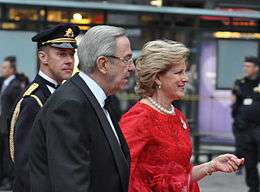
In 2004, Constantine returned to Greece temporarily during the Athens Olympic Games as a member of the International Olympic Committee.[13] On 24 December 2004, Constantine and Anne-Marie and members of the former royal family visited the Presidential Mansion (the former Royal Palace) in Athens where Constantine met President Costis Stephanopoulos, who gave them a tour.
According to a nationwide 2007 survey of 2,040 households conducted on behalf of the newspaper To Vima, only 11.6% supported a constitutional monarchy. More than half of the respondents, 50.9%, considered the dictatorship of the junta had brought benefits to Greece.[14]
During the 2008 Beijing and 2012 London Olympics, Constantine, in his role as honorary member of the International Olympic Committee, was the official presenter at the sailing medal ceremonies. He is Co-President of Honour of the International Sailing Federation with King Harald V of Norway, since 1994.[15]
In 2013, Constantine returned to reside in Greece.[16] In November 2015, his autobiography was published in three volumes by the national newspaper, To Vima.[17] It has not yet been published in English.
Constantine is a patron of Box Hill School, a public school in Dorking, in the south of England.
Marriage and children
On 18 September 1964, in a Greek Orthodox ceremony in the Metropolitan Cathedral of Athens, he married Princess Anne-Marie of Denmark.
The children of Constantine and Anne-Marie are:
- Princess Alexia, born on 10 July 1965 at Mon Repos in Corfu. She was married on 9 July 1999 in London to Carlos Morales Quintana.
- Crown Prince Pavlos, born on 20 May 1967 at Tatoi Palace in Athens. He was married on 1 July 1995 in London to Marie-Chantal Miller.
- Prince Nikolaos, born on 1 October 1969 at Villa Claudia Clinic in Rome. He was married on 25 August 2010 in Spetses to Tatiana Elinka Blatnik.
- Princess Theodora, born on 9 June 1983 in St Mary's Hospital, London, who is pursuing an acting career.
- Prince Philippos, born on 26 April 1986 in St Mary's Hospital, London.[18] He works as a hedge fund analyst in New York.[19]
Ancestry
| Ancestors of Constantine II of Greece | |||||||||||||||||||||||||||||||||||||||||||||||||||||||||||||||||||||||||||||||||||||||||||||||||||||||||||||||||||||||||||||||||||||||||||||||||||||||||||||||||||||||||||||||||||||||||||||||||||||||||||||||||||||||||||||||||||||||||||||||||||||||||||||||||||||||||||||||||||||||||
|---|---|---|---|---|---|---|---|---|---|---|---|---|---|---|---|---|---|---|---|---|---|---|---|---|---|---|---|---|---|---|---|---|---|---|---|---|---|---|---|---|---|---|---|---|---|---|---|---|---|---|---|---|---|---|---|---|---|---|---|---|---|---|---|---|---|---|---|---|---|---|---|---|---|---|---|---|---|---|---|---|---|---|---|---|---|---|---|---|---|---|---|---|---|---|---|---|---|---|---|---|---|---|---|---|---|---|---|---|---|---|---|---|---|---|---|---|---|---|---|---|---|---|---|---|---|---|---|---|---|---|---|---|---|---|---|---|---|---|---|---|---|---|---|---|---|---|---|---|---|---|---|---|---|---|---|---|---|---|---|---|---|---|---|---|---|---|---|---|---|---|---|---|---|---|---|---|---|---|---|---|---|---|---|---|---|---|---|---|---|---|---|---|---|---|---|---|---|---|---|---|---|---|---|---|---|---|---|---|---|---|---|---|---|---|---|---|---|---|---|---|---|---|---|---|---|---|---|---|---|---|---|---|---|---|---|---|---|---|---|---|---|---|---|---|---|---|---|---|---|---|---|---|---|---|---|---|---|---|---|---|---|---|---|---|---|---|---|---|---|---|---|---|---|---|---|---|---|---|---|---|---|
| |||||||||||||||||||||||||||||||||||||||||||||||||||||||||||||||||||||||||||||||||||||||||||||||||||||||||||||||||||||||||||||||||||||||||||||||||||||||||||||||||||||||||||||||||||||||||||||||||||||||||||||||||||||||||||||||||||||||||||||||||||||||||||||||||||||||||||||||||||||||||
Titles, styles and honours
Titles and styles
Until 1994, Constantine's official Greek passport identified him as "Constantine, former King of the Hellenes". A law passed in 1994 stripped him of his Greek citizenship, passport, and property. The law stated that Constantine could not be granted a Greek passport unless he adopted a surname. He continues to use the title "King Constantine", although he no longer uses "Constantine, King of the Hellenes". Today, this appellation draws attention to the fact that Constantine and his family lack a legal surname in Greece. Constantine has stated: "I don't have a name—my family doesn't have a name. The law that Mr Papandreou passed basically says that he considers that I am not Greek and that my family was Greek only so long as we were exercising the responsibilities of sovereign, and I had to go out and acquire a name. The problem is that my family originates from Denmark, and the Danish royal family haven't got a surname." Glücksburg, he said, was not a family name but the name of a town. "I might as well call myself Mr. Kensington."[20]
Constantine freely travels in and out of Greece on a Danish passport, as Constantino de Grecia (Spanish for 'Constantine of Greece'),[21] because Denmark (upon request) issues diplomatic passports to any descendants of King Christian IX and Queen Louise, and Constantine is a Prince of Denmark in his own right.[22] During his first visit to Greece using this passport, Constantine was mocked by some of the Greek media, which hellenized the "de Grecia" designation and used it as a surname, thus naming him Κωνσταντίνος Ντεγκρέτσιας ('Constantine Degrecias').[21]
The International Olympic Committee continues to refer to Constantine as His Majesty King Constantine.[23] In Greece, he is referred to as ο τέως βασιλιάς or ο πρώην βασιλιάς ('the former king').
Honours
National honours
.svg.png)
- Sovereign Knight Grand Cross of the Royal Order of the Redeemer
- Sovereign Knight Grand Cross with Collar of the Order of Saints George and Constantine
- Sovereign of the Order of Saints Olga and Sophia
- Sovereign Knight Grand Cross of the Order of George I
- Knight Grand Cross of Order of the Phoenix
- Sovereign Knight Grand Cross of Order of Beneficence
- Recipient of the Commemorative Badge of the Centenary of the Royal House of Greece
Foreign honours

- Grand Commander of the Order of the Dannebrog[26]
- Recipient of the Silver Anniversary Medal of Queen Margrethe II and Prince Henrik
- Recipient of the 75th Birthday Medal of Queen Margrethe II[27]
- Recipient of the Ruby Jubilee Medal of Queen Margrethe II[28][29]
- Recipient of the 70th Birthday Medal of Queen Margrethe II
- Recipient of the Silver Jubilee Medal of Queen Margrethe II[30]
- Recipient of the Golden Anniversary Medal of Queen Margrethe II and Prince Henrik
- Recipient of the Prince Henrik's Commemorative Medal
- Recipient of the 80th Birthday Medal of Queen Margrethe II

.svg.png)

_crowned.svg.png)
- Knight Grand Cross of the Order of Saints Maurice and Lazarus
- Knight Grand Cross of the Order of the Crown of Italy
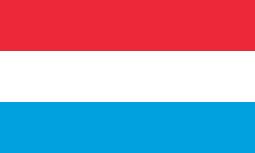





- Knight of the Order of the Seraphim[39]
- Recipient of the 50th Birthday Medal of King Carl XVI Gustaf[40]
.svg.png)
Awards
- Greek Scout Association Silver Phoenix Award (1959)
- Scout Association of Japan Golden Pheasant Award (1964)[42]
- International Sailing Federation Beppe Croce Trophy (2010)[43]
See also
- Timeline of Greek history
- History of modern Greece
- List of Olympic medalists in sailing § Dragon class
- Round Square
References
- Hope, Kevin. Referendum plan faces hurdles. Financial Times 1 November 2011.
- "Constantine II", Encyclopædia Britannica Online Academic Edition, Encyclopædia Britannica, 2011, retrieved 12 November 2011,
On 1 June 1973, the military regime ruling Greece proclaimed a republic and abolished the Greek monarchy. A referendum on July 29, 1973, confirmed these actions. After the election of a civilian government in November 1974, another referendum on the monarchy was conducted on 8 December. The monarchy was rejected, and Constantine, who had protested the vote of 1973, accepted the result.
- Curley, W.J.P. (1975). Monarchs In Waiting. London: Hutchinson & Co Ltd. pp. 39–41. ISBN 0-09-122310-5.
- "Olympic Records World Records". Olympic. Retrieved 12 August 2013.
- Crown Prince Konstantinos. sports-reference.com
- "Ailing Greek King Names Son Regent". The New York Times. 21 February 1964. Retrieved 29 April 2016.
- TV documentary "ΤΑ ΔΙΚΑ ΜΑΣ 60's – Μέρος 3ο: ΧΑΜΕΝΗ ΑΝΟΙΞΗ Archived 6 April 2008 at the Wayback Machine" Stelios Kouloglu
- The Colonels on Trial. Time Magazine (11 August 1975)
- Hindley, G (1979). The Royal Families of Europe. London: Lyric Books Ltd. pp. 126–127. ISBN 0-07-093530-0.
- R. Cronicles, The Referendum
- Smith, Helena. "Greece's former king goes home after 46-year exile". The Guardian. Retrieved 30 March 2016.
- Helena Smith (29 November 2002). "Court deals decisive blow to deposed Greek royals". The Guardian. Retrieved 12 August 2013.
- "Throneless abroad: The men who would be king" TIME magazine (3 June 2002/Vol. 159 No. 22)
- The Greeks are looking for a new strong leader, To Vima, 22 April 2007; https://web.archive.org/web/20070425203217/http://tovima.dolnet.gr/print_article.php?e=B&f=15044&m=A04&aa=1
- HM KING CONSTANTINE. greekroyalfamily.gr
- Smith, Helena (15 December 2013). "Greece's former king goes home after 46-year exile". The Guardian. Retrieved 3 March 2016.
- The first volume of 'King Constantine' , 23 November 2015; http://www.tovima.gr/politics/article/?aid=756338
- Maung, Carole Aye (5 September 1997). "Our Auntie Diana". The Mirror. Retrieved 15 June 2013.
- "Why European Royalty and Aristocrats are flocking to New York". Gotham Magazine. Archived from the original on 9 May 2015. Retrieved 1 February 2015.
- "King Without a Country", Vanity Fair (July 1995)
- Βραβορίτου, Αγνή (25 April 2003). Δεν περνάει η μπογιά του. Eleftherotypia (in Greek). Χ. Κ. Τεγόπουλος Εκδόσεις Α.Ε. Archived from the original on 18 February 2013. Retrieved 1 September 2011.
- Question '''S 3937''' to the Minister of Justice (11 September 2001). Folketinget.dk. Retrieved on 9 April 2016.
- HM King Constantine. International Olympic Committee. Retrieved on 2016-09-16.
- 40th throne jubilee of Queen Margrethe II. – gala dinner – 42-31797623 – Rights Managed – Stock Photo – Corbis. Corbisimages.com (15 January 2012). Retrieved on 2016-04-09.
- Gala Performance In The Royal Theatre In Preparation Danish Wedding. Getty Images. Retrieved on 9 April 2016.
- JPG image. wordpress.com
- Photographic image. Getty Images.
- Photographic image. Getty Images.
- "Image: 764633.jpg, (377 × 480 px)". pricescope.com. Retrieved 4 September 2015.
- "Greek royal jewels". forum.alexanderpalace.org. Retrieved 4 September 2015.
- https://www.youtube.com/watch?v=LjorMkctQhM/
- Badraie image Archived 6 April 2016 at the Wayback Machine. Retrieved on 9 April 2016.
- Photographic image. Getty Images.
- Guests at the Royal Wedding of Beatrix and Claus. angelfire.com
- "Wedding of Beatrix and Claus". Retrieved 9 August 2016.
- Кавалеры 1-й степени. Saintanna.Ru. Retrieved on 9 April 2016.
- List of recipients. Saintanna.Ru (16 February 2015). Retrieved on 2016-04-09.
- Photographic image. Getty Images.
- aloveofroyalhistory: Queen Rania of Jordan on the arm of King Constantine of Greece, 2010. | Rania of Jordan | Pinterest | Queen Rania, Greece and Jordans. Pinterest. Retrieved on 9 April 2016.
- "Queen Anne Marie Of Greece Attends A Performance Of The Dramatic... News Photo | Getty Images". gettyimages.co.uk. Retrieved 4 September 2015.
- "Membership of the Constantinian Order". Sacred Military Constantinian Order of Saint George. 2008. Archived from the original on 18 July 2011. Retrieved 13 October 2008.
- reinanzaka-sc.o.oo7.jp/kiroku/documents/20140523-3-kiji-list.pdf
- "Official Website: Beppe Croce". Sailing. 21 February 2012. Archived from the original on 25 September 2012. Retrieved 12 August 2013.
Bibliography
- Woodhouse, C.M. (1998). Modern Greece a Short History. London: Faber & Faber. ISBN 0-571-19794-9.
- Γιάννης Κάτρης (1974). Η γέννηση του νεοφασισμού στην Ελλάδα 1960–1970. Athens: Παπαζήση.
- Αλέξης Παπαχελάς (1997). Ο βιασμός της ελληνικής δημοκρατίας. Athens:Εστία. ISBN 960-05-0748-1.
- ΜΑΡΙΟΣ ΠΛΩΡΙΤΗΣ:Απάντηση στον Γκλύξμπουργκ, Εφημερίδα Το ΒΗΜΑ, Κυριακή 10 Ιουνίου 2001 – Αρ. Φύλλου 13283
- ΜΑΡΙΟΣ ΠΛΩΡΙΤΗΣ:Δευτερολογία για τον Γκλύξμπουργκ, Εφημερίδα Το ΒΗΜΑ, Κυριακή 24 Ιουνίου 2001 – Αρ. Φύλλου 13295
- ΣΤΑΥΡΟΣ Π. ΨΥΧΑΡΗΣ: H ΣΥΝΤΑΓΗ ΤΗΣ ΚΡΙΣΗΣ, Εφημερίδα Το ΒΗΜΑ, 17/10/2004 – Κωδικός άρθρου: B14292A011 ID: 265758
- Constantine II of Greece (2015). "Βασιλεύς Κωνσταντίνος". Athens: To Vima. ISBN 978-960-503-693-5.
- Καδδάς, Αναστάσιος Γ. (2010). "Η Ελληνική Βασιλική Οικογένεια". Athens: Εκδόσεις Φερενίκη. ISBN 978-960-9513-03-6.
External links
| Wikiquote has quotations related to: Constantine II of Greece |
| Wikimedia Commons has media related to Constantine II of Greece. |
Constantine II of Greece House of Schleswig-Holstein-Sonderburg-Glücksburg Cadet branch of the House of Oldenburg Born: 2 June 1940 | ||
| Regnal titles | ||
|---|---|---|
| Preceded by Paul |
King of the Hellenes 6 March 1964 – 1 June 1973 |
Vacant |
| Loss of title |
— TITULAR — King of the Hellenes 1 June 1973 – present Reason for succession failure: Abolition of the monarchy in 1973/74 |
Incumbent Heir: Pavlos, Crown Prince of Greece |
.svg.png)
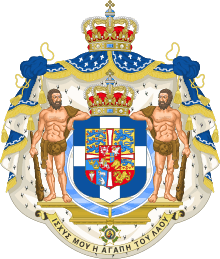

.svg.png)